Removal Procedure
Caution: Provide additional support when a vehicle is on a hoist in the following
ways:
• Before removing parts, support the opposite end. This helps prevent
the vehicle from slipping off. • Before removing major components, chain the vehicle frame to the
hoist pads at the same end as the removal. This helps avoid a tip-off.
- Relieve the fuel system pressure. Refer to the Fuel Pressure Relief .
- Drain the fuel tank. Refer to Fuel Tank Draining .
- Remove the fuel tank filler pocket.
- Raise the vehicle. Go to Lifting and Jacking the Vehicle in general information.
- Remove the fuel filler pipe shield.
- Remove the exhaust system from the catalytic converter back. Refer to Muffler Replacement in Engine Exhaust.
- Remove the exhaust pipe heat shield and the exhaust muffler heat shield.
- Remove the rear axle assembly. Refer to Rear Axle Replacement in Rear Drive Axle.
- Clean all fuel pipe connections and surrounding areas before disconnecting the fuel pipes in order to avoid possible contamination of the fuel system.
- Disconnect the EVAP pipes (1) at the EVAP canister (2).
- Disconnect the fuel return pipe (4).
- Disconnect the EVAP purge pipe (3).
- Disconnect the fuel feed pipe at the fuel filter inlet.
- Disconnect the fuel tank vent valve from the rear brake hose bracket.
- Remove the rear pipe clip.
- Disconnect the fuel sender and the fuel pressure sensor electrical connectors.
- Disconnect the electrical harness clip (2) from the fuel tank flange (1).
- With the aid of an assistant, support the fuel tank.
- Remove the left fuel tank strap attaching bolt (3) from the underbody bracket (1).
- Lower the left fuel tank strap (2).
- Remove the EVAP canister vent solenoid and bracket (4).
- Remove the right fuel tank strap attaching bolt.
- Lower the right fuel tank strap.
- Remove the fuel tank.
- Place the fuel tank in a suitable work area.
- Remove the fuel tank insulators if necessary.
- Remove the fuel sender assembly (3) and the rear fuel and EVAP pipes from the fuel tank. Refer to Fuel Sender Assembly Replacement .
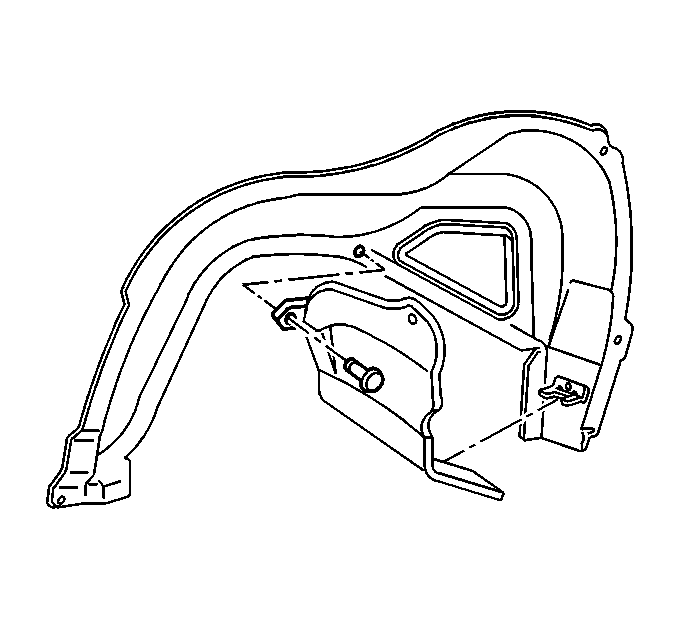
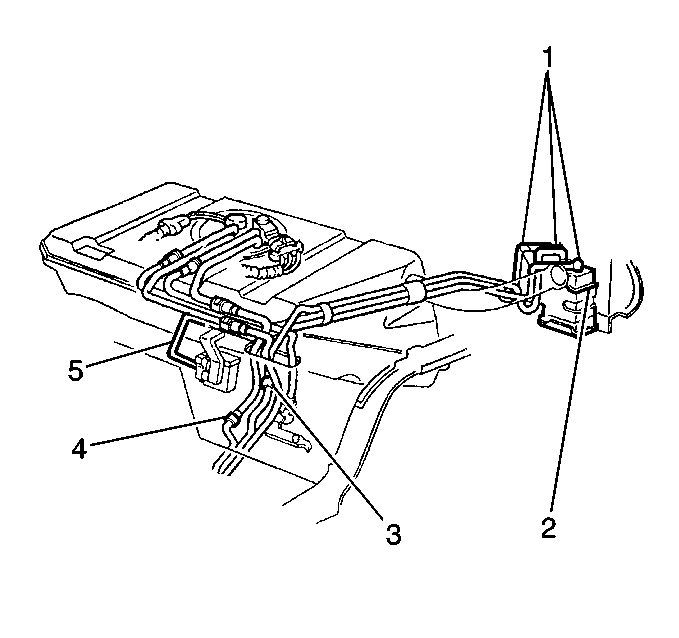
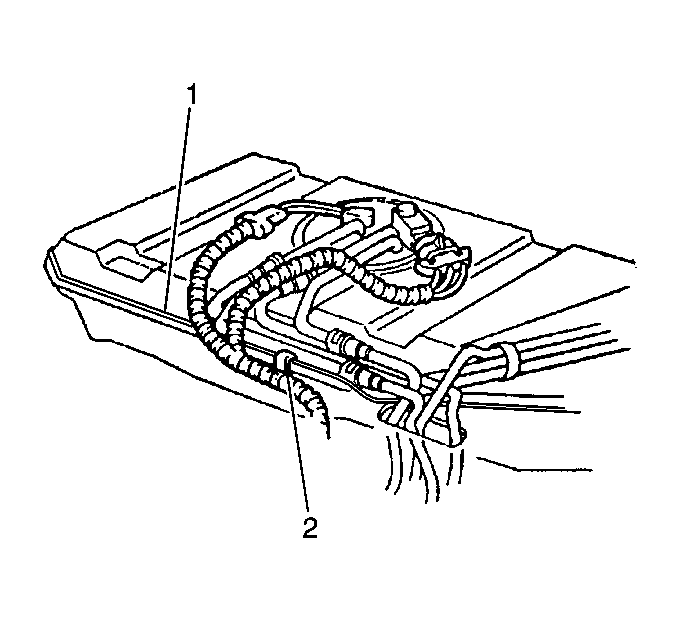
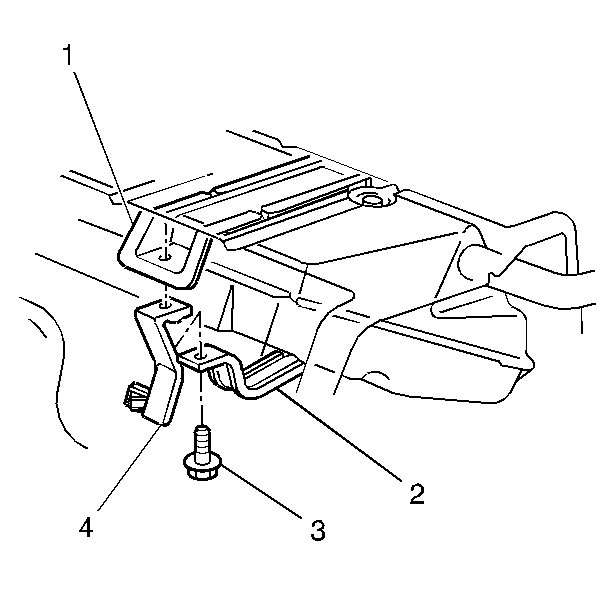
Notice: Do not bend the fuel tank straps. Bending the fuel tank straps may damage the straps.
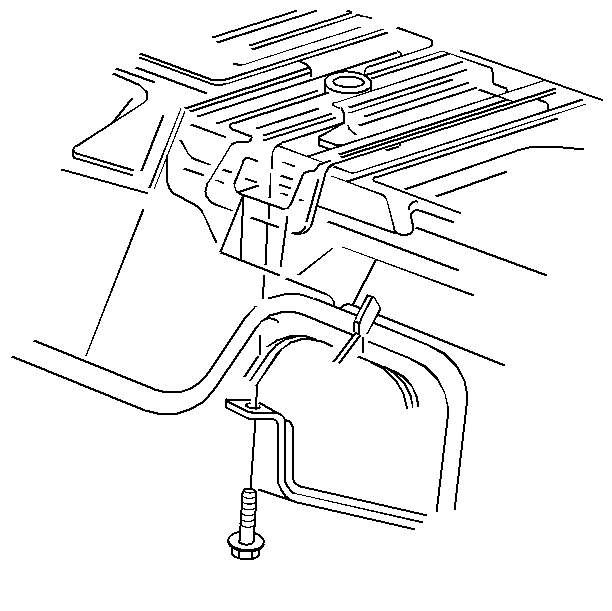
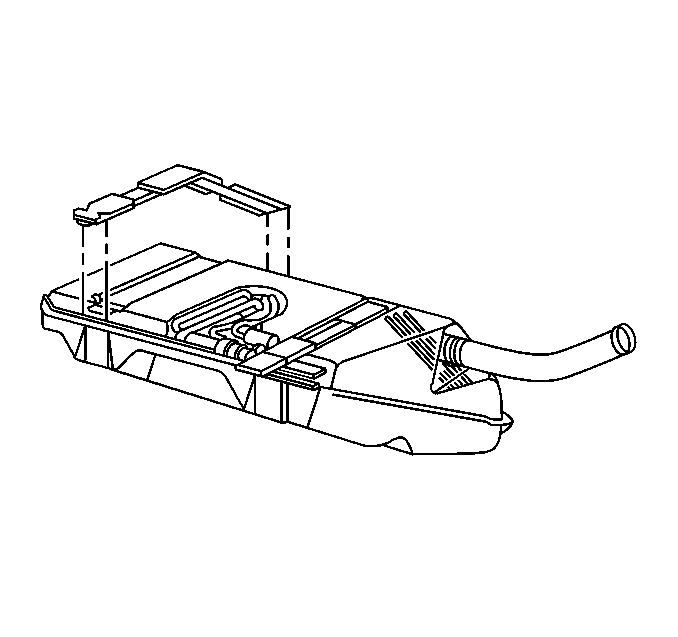
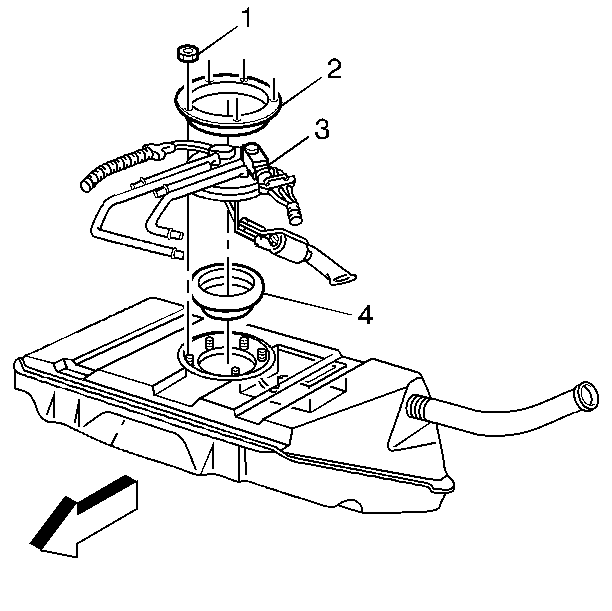
Installation Procedure
- Reinstall the fuel sender assembly (3) and the rear fuel and EVAP pipes to the fuel tank. Refer to Fuel Sender Assembly Replacement .
- Reinstall the right fuel tank insulator.
- Align the insulator (2) on the top of the fuel tank with 15-25 mm (0.6-1.0 in) of the insulator extending beyond the edge of the fuel tank front flange (3).
- Fold the insulator down.
- Secure the insulator to the flange (4). The alignment notch on the insulator lines up with the fuel tank flange edge (1).
- With the aid of an assistant, position and support the fuel tank.
- Position the right fuel tank strap up.
- Install the front right fuel tank strap attaching bolt.
- Position the EVAP canister vent solenoid bracket (4) between the left fuel tank strap (2) and the underbody bracket (1).
- Install the front left fuel tank strap attaching bolt.
- Connect the fuel sender and the fuel pressure sensor electrical connectors.
- Connect the electrical harness clip (2) to the fuel tank flange (1).
- Connect the fuel tank vent valve to the rear brake hose bracket.
- Connect the fuel feed pipe at the fuel filter inlet.
- Connect the EVAP purge pipe (3).
- Connect the fuel return pipe (4).
- Connect the EVAP pipes (1) at the EVAP canister (2).
- Reinstall the fuel and EVAP pipes into the pipe clip.
- Align the fuel and EVAP pipes in a flat position.
- Reinstall the pipe clip bolt.
- Reinstall the rear axle assembly. Refer to Rear Axle Replacement in Rear Drive Axle.
- Reinstall the exhaust system heat shields and attaching screws.
- Reinstall the exhaust system. Refer to Muffler Replacement in Engine Exhaust.
- Install the fuel filler pipe shield.
- Lower the vehicle.
- Reinstall the fuel tank filler pocket.
- Refill the fuel tank.
- Reinstall the fuel filler cap.
- Connect the negative battery cable.
- Inspect for leaks.


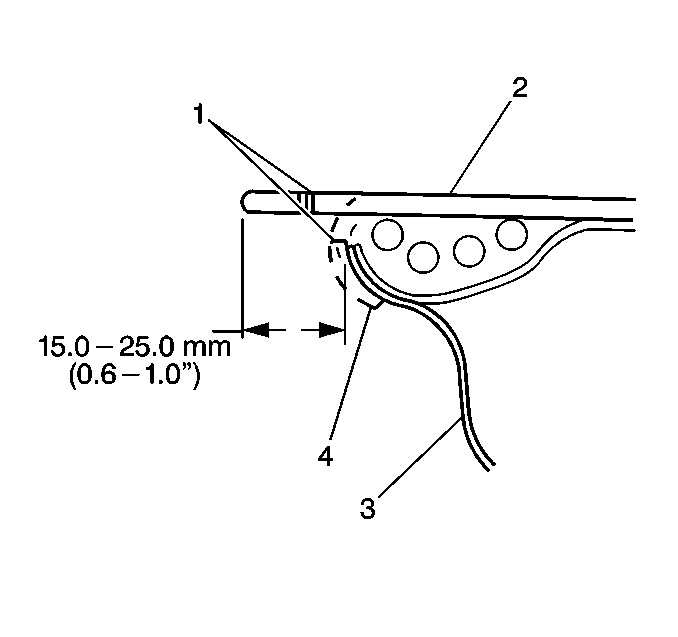
Important: The fuel sender pipes must route below the left fuel tank insulator.


Notice: Use the correct fastener in the correct location. Replacement fasteners must be the correct part number for that application. Fasteners requiring replacement or fasteners requiring the use of thread locking compound or sealant are identified in the service procedure. Do not use paints, lubricants, or corrosion inhibitors on fasteners or fastener joint surfaces unless specified. These coatings affect fastener torque and joint clamping force and may damage the fastener. Use the correct tightening sequence and specifications when installing fasteners in order to avoid damage to parts and systems.
Tighten
Tighten the front fuel tank strap attaching bolts to 33 N·m
(24 lb ft).


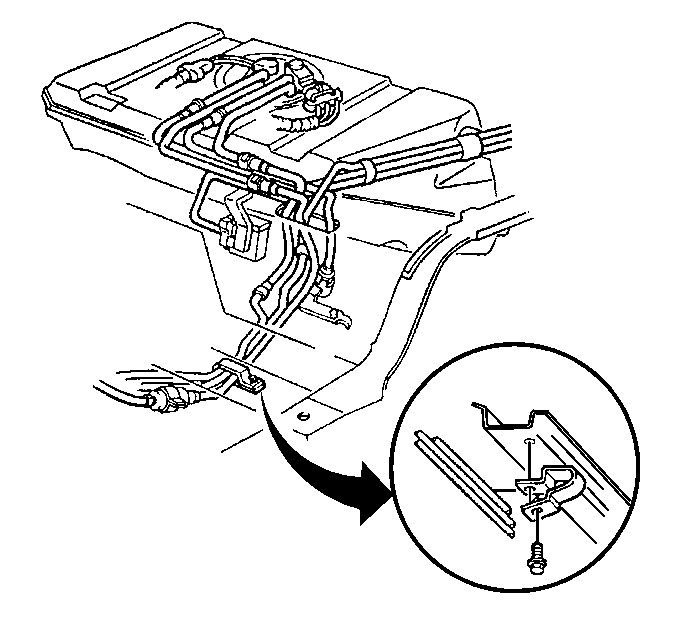
Tighten
Tighten the pipe clip bolt to 5.5 N·m (49 lb in).

| 30.1. | Turn the ignition switch ON for 2 seconds. |
| 30.2. | Turn the ignition switch OFF for 10 seconds. |
| 30.3. | Turn the ignition switch ON. |
| 30.4. | Check for fuel leaks. |
